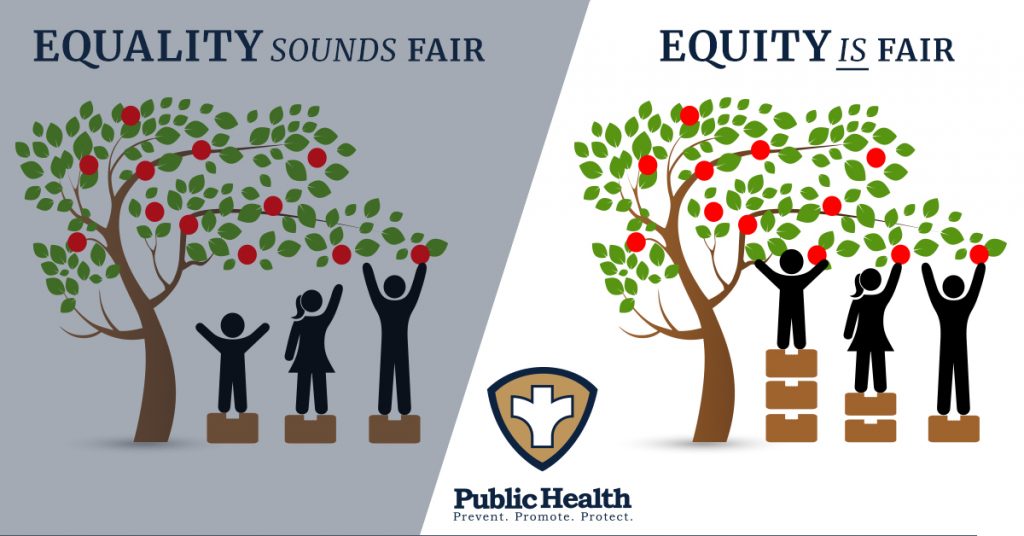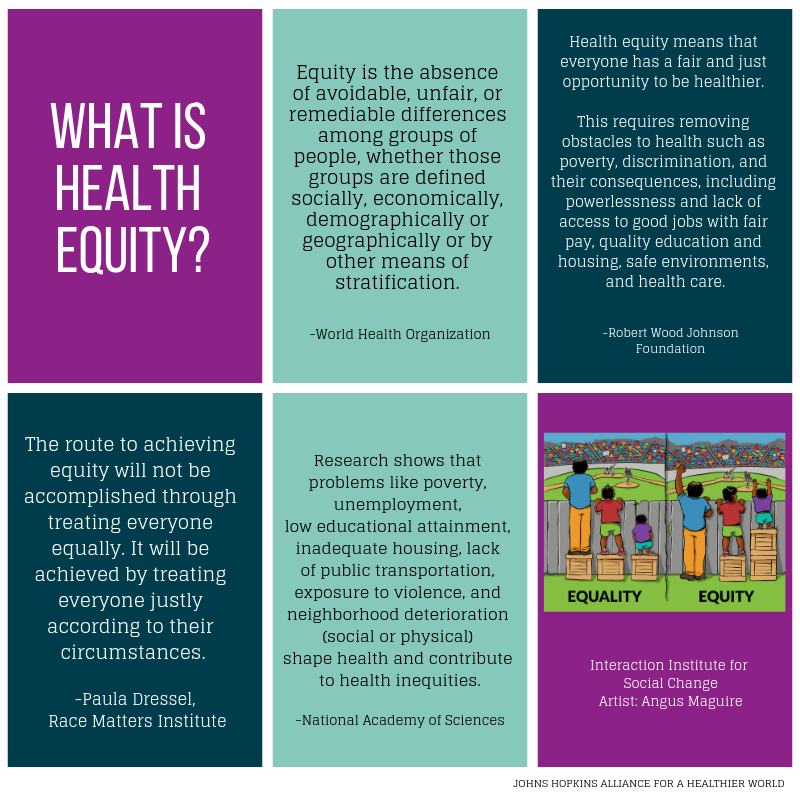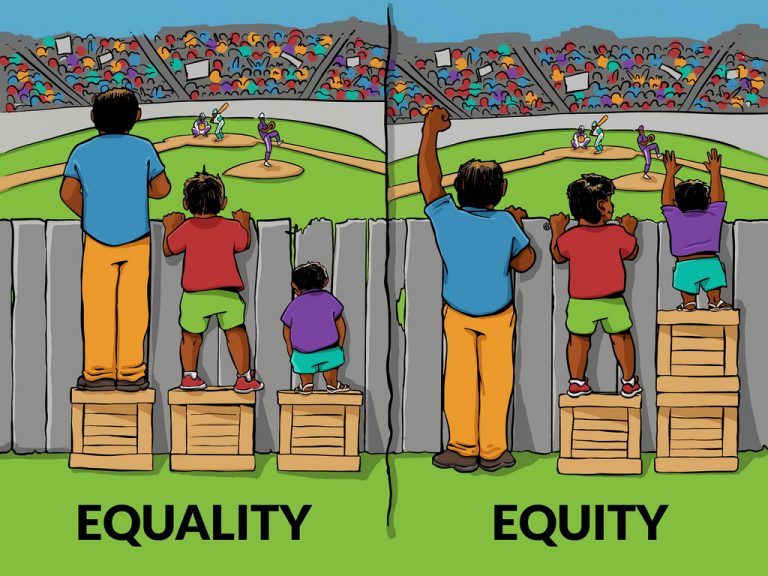Crossroads: Conversations about
Race, Gender & Disability

By Rasheera Dopson
Intersectionality: Race, Gender, & Disability
At the center of health justice lies the answer of equity.
Rasheera Dopson Tweet

The Age of Health Equity
In the past year of many buzz words, we’ve have been hearing about the concept of equity in healthcare. When looking at the most basic definition of understanding equity, we understand it’s definition to be equal, fair, or impartial treatment. What this looks like in the public health space is ensuring that all people have equal access to care and that all care is dispersed among population groups in the way in which they can achieve their highest level of optimal health. While most in healthcare are familiar with disparities— which is the differentiation of unequal health outcomes between population groups– they are not as aware of the resolution of health disparities — which is to establish equity.
Equity differs from equality in that it doesn’t focus so much on making sure that everyone gets the same amount of care no matter their race, ethnicity, religion, sexual orientation, disability or social economic status. Instead, equity specifies that health care and services are distributed according to an individual’s or group’s need. Hence, those who require more should have access to more health resources. Historically, we understand that the principle of equality has preceded equity. But that has not always worked. For instance, in order for equality to be successful, one has to assume that all parties start off on equal level playing fields. Thus, the demand for equality is not realistic. In an overview of the comparison between equality and equity, research tell us that equity is more likely to lean in favor of those who are already underserved and underprivileged. One researcher notes, “over time, equality has changed in meaning to refer to the similarity of treatment of individuals and groups. Equity has emerged as an alternative construct linked to social justice, especially in the fields of health and education. Equity invokes a search for the social, economic, and political causes of inequality and for remedies that consider context and circumstances of disparate outcomes.” In the famous word of the late Dr. Martin Luther King Jr.: “the arc of the moral universe is long, but it bends toward justice.” From this scholastic observation we see that at the center of health justice lies the answer of equity.
In the age of Equity, as thought leaders and practitioners in public health, we not only have to push agendas that promote justice, but we also have a responsibility and obligation to invoke equity. And equity, unlike equality, requires action and movement. Equity burdens us all with the task of foreseeable change. Equity is focused less on the performative act and concentrates more on application. We must continue to ask ourselves this question: “how can we address the disparities in our health care system through the lens of equity?”
Researcher’s, policy makers, and multiple stakeholders have all contemplated tools and avenues to achieve equity within our healthcare system. One of the many tools considered is the digitalization of our health care system. One study suggests that “thinking through health equity involves identifying and acting on the root causes of the uneven distribution of health-related burdens and outcomes. Earlier discussions about health equity in digital public health considered digitalization as a tool to address existing inequities and emphasized literacy as critical for access, uptake, and use of DTs. (digital technologies)” Although digital technology is just one way in addressing equity, one of the top priorities we should all take is first addressing barriers to equity. That means tackling the social and political determinants of health.
In a study done by the Institute of Medicine (IOM), some commentaries state “ the inequities linger largely because remedies often focus only on reducing disparities in clinical care and not on the social determinants of individual and population health.” As seen in this statement, equity is not just limited to the social framework of healthcare. Equity can also be applied to clinical advertisement as well. Taking a deeper dive into equity means taking a step back and looking from a holistic lens and placing equity where she needs to be and that is at the head of public health.
Equity burdens us all with the task of foreseeable change. Equity is focused less on the performative act and concentrates more on application.
Rasheera Dopson Tweet


Like what you read?
More from Rasheera Dopson here.

